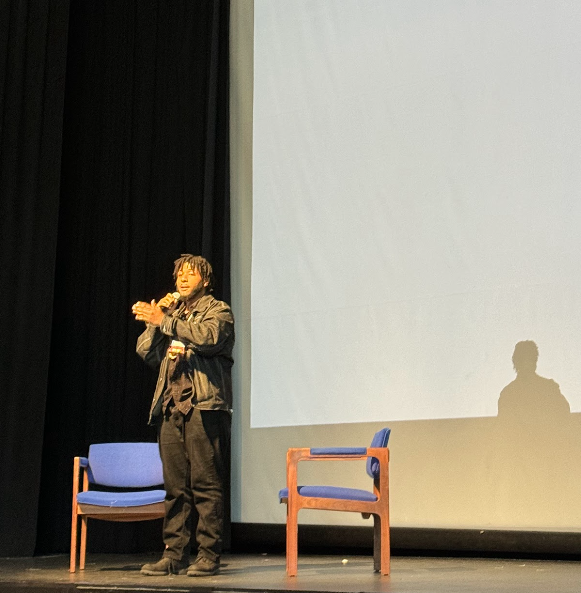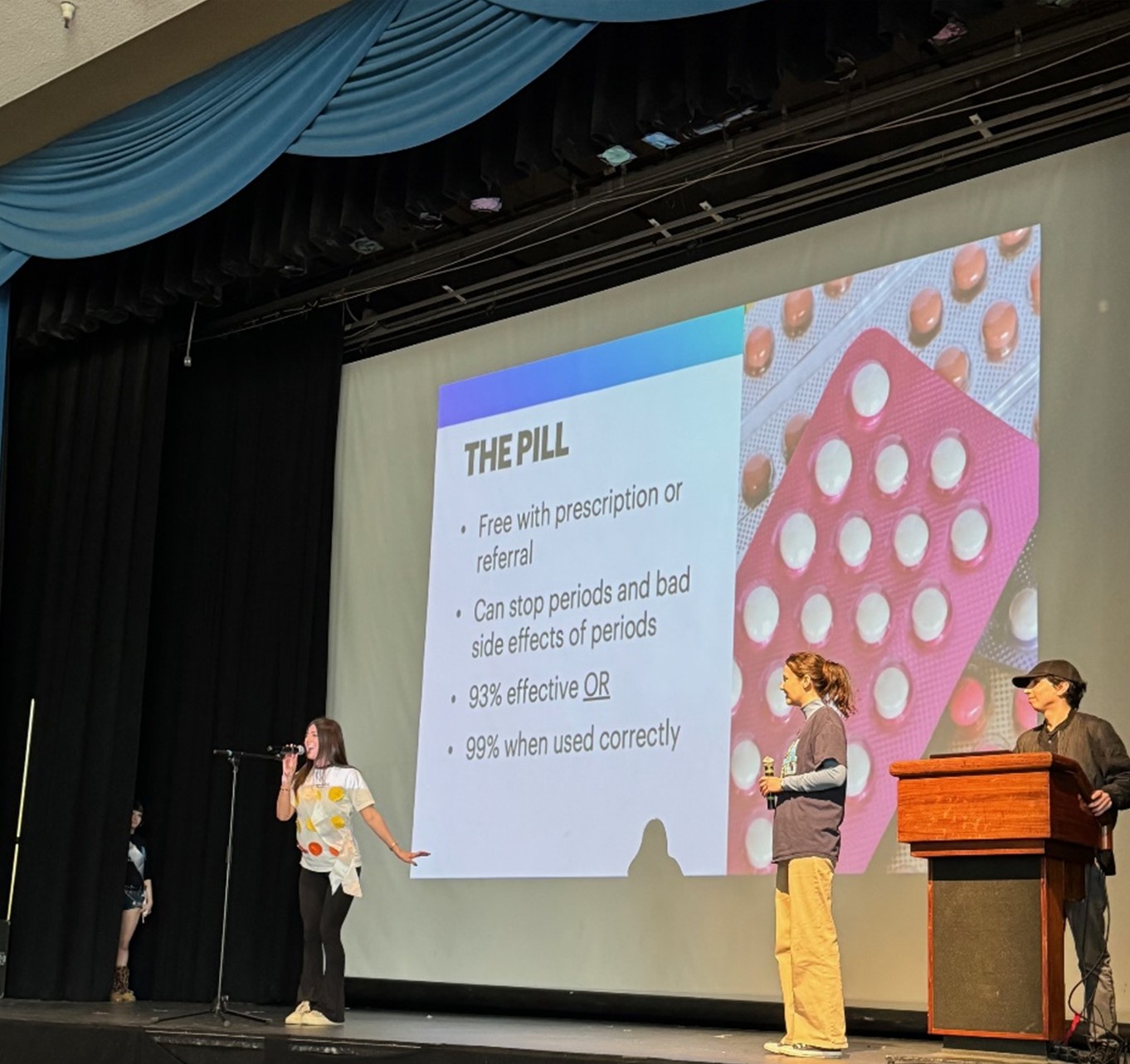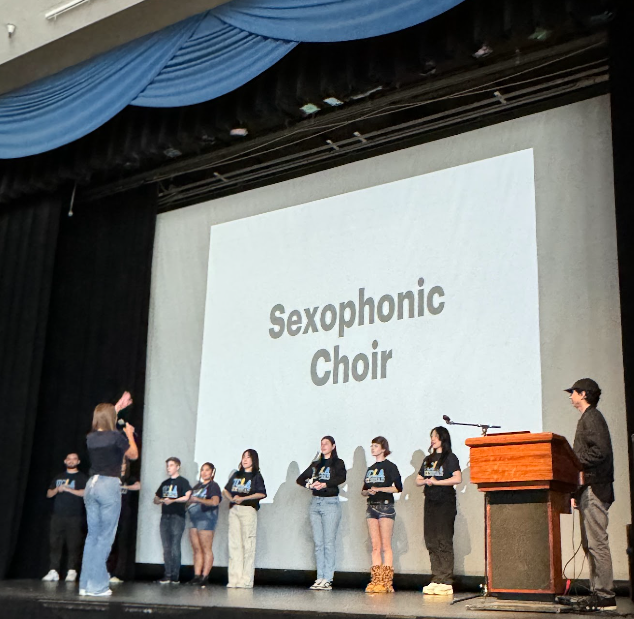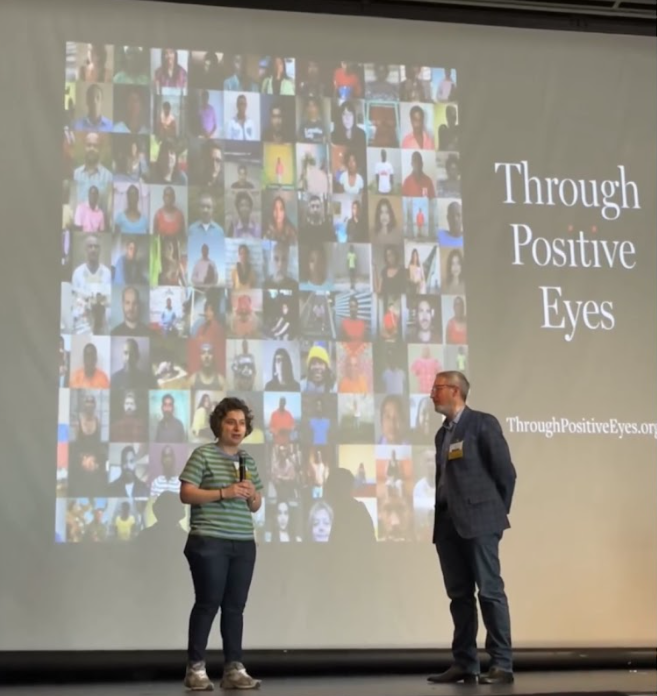Rohan Radhakrishna, MD, MPH, MS–Chief Equity Officer and Deputy Director of The Office of Health Equity at the California Department of Public Health (CDPH)–opened UC Global Health Day 2024 emphasizing the power of storytelling in our work as health professionals. It is a part of relating our work to the lives of the people we work for and within our communities. “We need to acknowledge and reflect, have language that's inclusive, include narrative and storytelling, have an intersectional approach and have diverse messengers and diverse platforms to reach people and rebuild trust,” he said.
During this UCGHD, it was important to show how that can happen, specifically through art and storytelling. If we can do it at our conferences, we can do it in our work and with our communities. This was showcased first in the middle of Dr. Radhakrishna’s speech where he invited his friend, Jacob Virges–community activist in Oakland, youth co-director of Urban Strategies Council, and poet–to contribute a spoken word poem, “The Temperature is Rising” that connected deeply to the climate work Dr. Radhakrishna's office is doing.

He begins calmly and the crescendo of his voice rising with every line:
The temperatures are rising.
Yes, things are heating up.
Our societies and ecosystems both need a tender touch.
Our resources are dying.
Our seas are overflowing.
Well, it's a lack of unified vision that's keeping us from growing. A lack of proper education is keeping us from knowing that we must find change soon before this Earth goes up in smoke.
As he continues, we can hear the resonance among audience members hearing “mmm hmms” and snaps in agreement as Virges continues to show the power of thinking about “tomorrow.”:
You can still hear the whispers of children through moonlit skies wishing on shooting stars for a brighter tomorrow.
And tomorrow that is filled with unnecessary pain and sorrow.
Tomorrow where love is to free leader and everyone follows a tomorrow where their store houses of hope for your neighbor's neighbor to borrow a tomorrow that isn't drowning
As the crescendo of the poem reaches its peak, his tempo and his emotions slow down to an almost meditative cadence. He breathes out “the temperatures are rising,” pauses and breathes and then says again, “the temperatures are rising.” Doing this several times, his meditation brings the audience along with him, they feel the pain and the fear through his voice, the emotions of thinking about tomorrow, and then the meditation that comes with continuing on to make change—all within a two-minute space of time. We all felt through Virges’ words the necessity of the intersection of art and action.
Later in the day, we were introduced to other creative methods showing the power of storytelling. Bringing humor to health, the UCLA Sex Squad–a program through UCLA Art & Global Health Center that uses art and theater in sex education for 2,000 ninth graders in LA Unified School District (LAUSD)–showcased their approach. “LAUSD students come to us by the busload” said Sex Squad member, Maya introducing the group. “And then we use humor, theater, music, dance, and spoken word to share what we wish we had known when we were ninth graders. It's almost like we're talking to our younger selves.” And then they performed.
Staging a beauty-pageant-style format, the Squad introduced the different options for contraceptives, each sauntering out on stage to RuPaul’s “Cover Girl” blasting over the sound system, each “contestant” displaying their own unique persona. “What. Is. Up. I’m IUD!!!” one contestant screams like the announcer for screaming basketball fans. “Howdy y’all, I’m the patch, but you can call me patches,” another contestant says sweetly with a southern accent. All other contraceptive options–the pill, the implant, the injection, vaginal ring, condom, and the pull-out method–go through their uses. The Pull-Out method–who stumbles, minces words, and displays an air of unreliability–is the only one to not win the pageant.

The tone changes significantly in the next performance where three Sex Squad members give short, poignant monologues to their teenage selves that deal with sexuality, gender, insecurity, and worry. Each showed compassion and care to their younger selves. To conclude, the group ended with humor and group participation in “Sexophonic Choir” where they introduced the bodily fluids that carry HIV. Instead of merely listing off these fluids expecting the audience to remember them, each fluid related to a different musical tone and a little dance first performed by one or two Squad members. By the end, the Sex Squad had the whole audience actively participating.

Given the laughter and cheering from this audience of health professionals, it was easy to picture how an auditorium of ninth graders would be able to relate to the material coming from people not that much older than them, in a way that is fun, engaging, and much easier to remember than a lecture.
And finally, we learned about another project of UCLA Art & Global Health Center, Through Positive Eyes that tells the story of 150 people living with HIV/AIDS around the world through photo-storytelling. Center Director, David Gere introduced Yana Panfilova, a Ukrainian refugee and artist from Ukraine who was born with HIV and contributed to the project in its newest series that highlights people living with HIV affected by the war in Ukraine. In the adjoining lounge area, thought-provoking photos from the project showed the power of putting the camera in people’s hands to tell their story. You can read more about Through Positive Eyes in our December 2022 World AIDS Day story.

It was such a powerful and fun experience to be immersed in the various methods that showed the power of art, storytelling, and public health. As global health professionals, we can harness the transformative potential of art and storytelling to actively involve young people in global health initiatives through creative avenues so that we can not only empower the next generation of leaders but also ensure that diverse perspectives and innovative solutions are at the forefront of our collective global health efforts.
